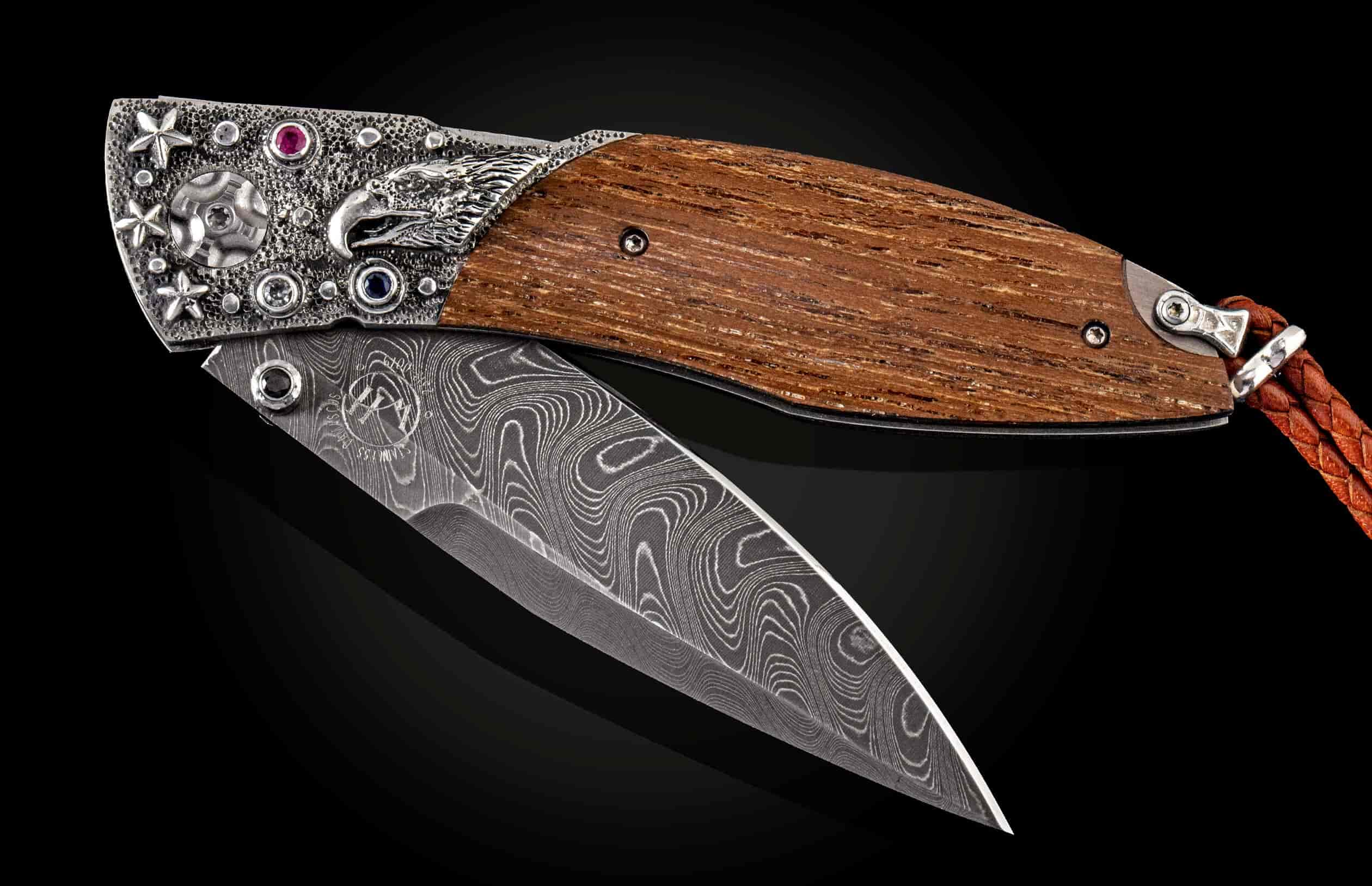Product Details
The Omni 'USS California' features a frame in hand-carved sterling silver by Lee Downey, inlaid with teak wood from the USS California battleship, reclaimed when it was decommissioned in 1959. The blade is hand-forged 'Boomerang' damascus by Chad Nichols. The ambidextrous thumb stud is inset with spinel gemstones. This design features a secure mid-lock system utilizing a William Henry patented hidden spring to maximize blade to handle ratio and the thumb stud provides easy one-hand opening. The Omni expands on our tradition of fine folding knives. Big enough for any daily tasks, small and light enough for easy carry, and always beautiful. As always, we built this knife to become a canvas for the exquisite range of our hallmark materials and artistry – whatever your passion you’ll find resonance in the Omni.
Product SKU: C19 USS CALIFORNIA
Features & Specs
- One-hand open, lock-back system
- Leather carrying case
- Shipped in an elegant wood presentation box
- Dimensions:
Blade 2.75" (69.8mm)
Handle 3.70" (94mm)
Overall open 6.50" (165mm)




